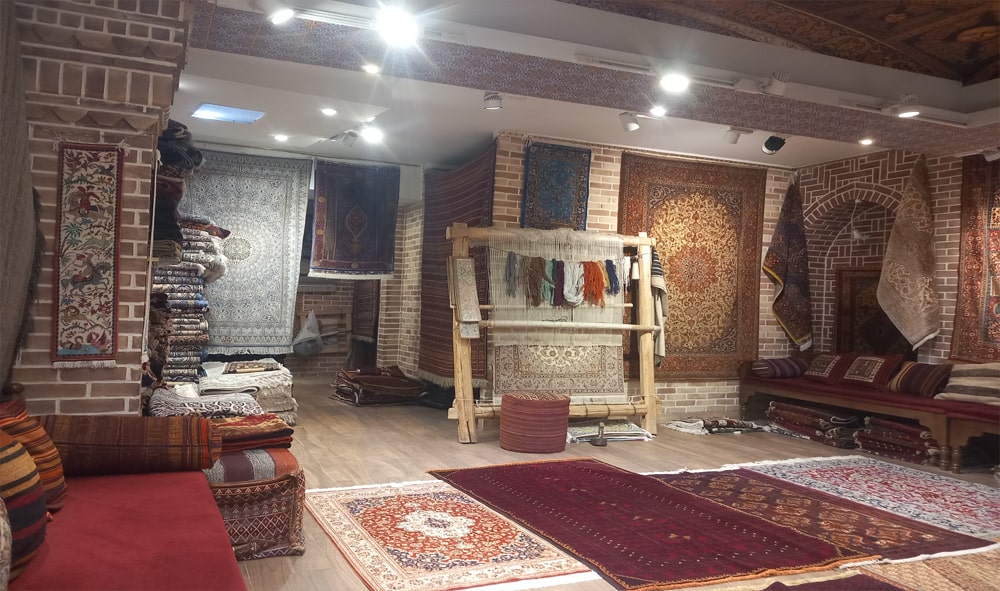
The Persian carpet or Persian rug is an essential part of Persian art and culture. Carpet-weaving is undoubtedly one of the most distinguished manifestations of Persian culture and art, and dates back to ancient Persia. The exquisitely intricate patterns and natural dyes have rendered it the most sought after hand-made weave in the world with acknowledgement of superiority in every aspect. Persian carpets can be divided into three groups: Farsh/Qali (sized anything greater than 6*4 feet), Qalicheh (meaning "small rug", sized 6*4 feet and smaller), and nomadic carpets known as Gelim (including Zilu, meaning "rough carpet"). Zilus are flat weaves but carpets our rugs are pile weaves.The pile can be from silk, wool, or fine wool (kork). Persian carpets and rugs are mainly made on a vertical loom. Nomadic weaves however, are made on a horizontal loom, which can be folded and carried from camp to camp. The colors used are all vegetable colors Such as saffron, walnut and pomegranate skin and etc.












